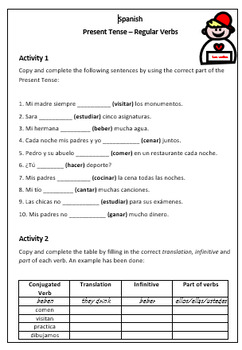
If it’s a regular verb, you add an -ó (with an accent mark), as in se peleó (she had a fight), but in the case of irregular verbs, like ir (to go) and poner (to put or to become), you essentially have to learn the conjugation by heart:

So, how do you form the third-person singular (he or she) in the pretérito simple? Let’s take a look! (The thing is I heard she had a fight with her boyfriend, but I’m not sure about whether it was before, after, or during the party.) (Hey, and do you know if Camila went to that party last week?)Įs que escuché que se peleó con su novio, pero ya no supe si antes, después o en la fiesta. Oye, ¿y sabes si Camila fue a la fiesta la semana pasada? Now let’s take a look at using the pretérito simple when talking about the third person singular (he/she): You won’t know ALL the conjugations just by memorizing chunks with flashcards like this, but it’ll help you a lot to imprint the general pattern on your brain, so they start rolling off the tongue in conversations! What did S/HE do last week?


What did YOU (plural) + THEY do a decade ago?.


 0 kommentar(er)
0 kommentar(er)
